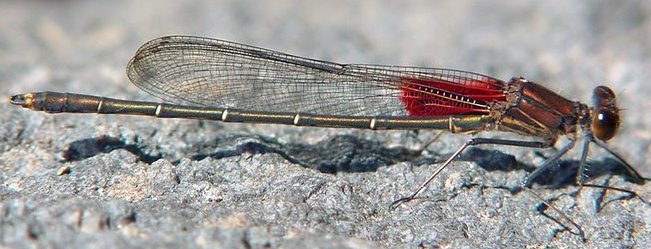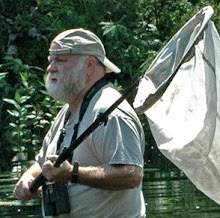
Saturday August 22, 2009; Friends Eric Eaton and Lynn Harper joined me for an exploration of a powerline cut through a sand barren in the DCR Ware River Watershed in the town of Oakham. Not quite the sands of Death Valley or Sahara but it is our own little window into life in the world of sand.
In New England we think of our native landscape as forested and full of trees... Left to its own devices the trees become old and tall. Disturbance of hurricane, fire, or flood can reset the sucessional clock but the process is predictable. Humans mimic these processes when they harvest trees for lumber to build their homes or firewood to heat it. We clear fields for farming and abandon them for nature to reclaim. We mine the landscape for sand and gravel leaving behind a moon scape. I have long been fascinated by this less obvious habitat type the plant free world of sand and the organisms adapted to this harsh environment.
 Tiger Beetles long legged predators in the order Coleoptera are a fascinating lot. Able to quickly run down their prey of ants and other small insects and take flight quickly to evade capture.
Tiger Beetles long legged predators in the order Coleoptera are a fascinating lot. Able to quickly run down their prey of ants and other small insects and take flight quickly to evade capture.  Netting these beetles is difficult, unlike most insects trapped under the net who fly upward they burrow under the rim of the net and quickly escape. Photographing these predators is a challenging event but stealth and patience can be rewarded.
Netting these beetles is difficult, unlike most insects trapped under the net who fly upward they burrow under the rim of the net and quickly escape. Photographing these predators is a challenging event but stealth and patience can be rewarded.The Festive Tiger Beetle Cicindela scutellaris (left) and Big Sand Tiger Beetle Cicindela formosa (Above) were present in good numbers at this sight.
The Tiger Beetle at left does not meet the species descriptions in my various sources my best guess is Cicindela rapanda but it will remain unnamed at this point. I'm just pleased to be able to observe these interesting insects in their world of sand
http://dhsmall.blogspot.com/
.jpg)




![Reblog this post [with Zemanta]](http://img.zemanta.com/reblog_e.png?x-id=3fb17573-f452-4297-a22f-d3235fcd005b)



![Reblog this post [with Zemanta]](http://img.zemanta.com/reblog_e.png?x-id=f4883f74-b6d0-4b79-9f03-4d99531a66e2)


![Reblog this post [with Zemanta]](http://img.zemanta.com/reblog_e.png?x-id=927e17c4-097e-4d37-aa3e-71aa60684e70)


![Reblog this post [with Zemanta]](http://img.zemanta.com/reblog_e.png?x-id=aedee22e-018e-4f14-bf73-9a5a5571b58b)
